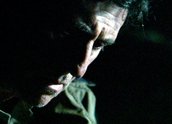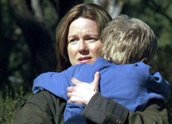


Jindabyne (2006)
Synopsis
In the Snowy Mountains, an electrician (Chris Haywood) murders a young woman and dumps her body in a river. Four men on a fishing trip find the body, secure it in the water, then carry on fishing. They report it the next day, after hiking out of the isolated valley. Back in Jindabyne, when word leaks out, the men are disgraced. Claire Kane ( Laura Linney) tries to understand how her husband Stewart (Gabriel Byrne) could have been so callous; Jude (Deborra-lee Furness) defends her husband Carl (John Howard). Schoolteacher Carmel (Leah Purcell) tells boyfriend Rocco (Stelios Yiakmis) that she’s disgusted, especially that he didn’t tell her the dead girl was Aboriginal. The youngest of the four men Billy (Simon Stone) is so ashamed that he and his partner Elissa (Alice Garner) decide to leave town. The family of Susan, the dead girl (Tatea Reilly), allege racism. Claire, who’s pregnant, tries to apologise to Susan’s relatives, but they reject her. Meanwhile, the killer drives around the town unnoticed, looking for his next victim.
Curator’s notes
Jindabyne is based on a 20-year-old short story by the American writer Raymond Carver, but it’s been so well adapted to the Australian milieu that it feels home-grown (Paul Kelly wrote a song about the same story, years before the film was made). The chief difference is that playwright Beatrix Christian, who wrote the script, makes the dead girl Aboriginal, which completely alters the story’s resonance and dynamics. The film becomes to some extent a drama about reconciliation. Not just black versus white, but men versus women. Changing the nationalities so that Stewart is Irish and Claire is American adds another layer: the small community in which they live becomes wider than we expect, but they’re still, to some extent, outsiders.
The film is about responsibility, but that idea is explored in some surprising ways. Ray Lawrence in his third feature (after Bliss and Lantana), offers us a lot of moral ambiguity. The men are seen as partly uncomprehending of what they have done; they didn’t kill her, after all. Most of the women cannot understand such callousness with another woman’s body. The men’s lack of action may be a sign of contempt, but is that to be compared to the callousness of the actual killer, whose presence in the town we are constantly aware of? Claire’s pregnancy is another question: she worries that she may abandon her new child, just as she did after the birth of their son Tom (Sean Rees-Wemyss). She is also so disturbed by her husband’s actions that she considers abortion. Is this socially acceptable murder, or a woman’s right over her own body? Claire goes to the hospital to view the body of the dead girl. Leah Purcell’s character, also Aboriginal, is appalled when she finds out. This is an act of the utmost disrespect in terms of Aboriginal beliefs about death. The ethical dilemmas keep rippling across the water in this extraordinarily well-made movie. Ray Lawrence continues the kind of exploration of contemporary morality that made Lantana so compelling, but it’s even more nuanced, and the mystery is magnified by the powerful use of the barren but beautiful alpine landscape.
Secondary curator’s notes
by Romaine MoretonJindabyne, adapted from the Raymond Carver short story So Much Water So Close to Home is, at it’s core, a discussion about mortality and the responsibility of the living to the dead, with the sweeping theme of land and our relationship to it. The four fishers, who decide to postpone reporting their discovery of the dead body of a young woman in the river in order to have their fishing trip, seem to be mesmerised and seduced by the river. We get a sense that they enter into a timelessness, during which any moral obligations to the deceased girl are postponed.
The decision to racialise the script by Beatrix Christian turns Jindabyne into a local tale imbued by national politics, and turns this story about life and death into a political conversation about the denied humanity of Indigenous peoples and the moral consequences of this act. Although the body of the Aboriginal girl is pivotal to this drama, the moral issues that polarise a community transpire between the non-Indigenous characters, who discuss issues of spirituality, religion, and sexism in a bid to comprehend the four men’s decision to leave the body tethered while they continue to fish. The Indigenous characters are very peripheral to the moral dilemma that divides the Jindabyne community, and few Indigenous characters have speaking parts in Jindabyne, with the main Indigenous dramatic contribution provided by Leah Purcell, Ursula Yovich, and Jie Pittman.
Ray Lawrence earnestly attempts to address the larger themes of land, beliefs and belonging, with the four fishers declaring a male-only space, into which the deceased female is essentially an intruder. The question of who possesses the moral authority is woven through this narrative; with the presence of Catholicism alongside Indigenous spirituality referring to a land potentially reshaped by introduced religious codes that displace the original belief systems.
The cultural consultation that took place during the making of Jindabyne ensured that the Indigenous actors involved in the film were able to have a say in how the ceremonial content of the film was developed, and Jindabyne, set in the land of the Monaro peoples, introduces this part of the country’s Indigenous heritage to Australian cinema.- Overview
- Curator’s notes
- Video 3 clips

- Principal credits
- Find a copy
- Make a comment
- Map
- Add your review




